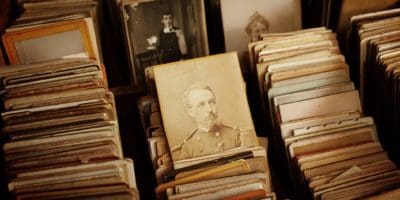Everything you need to know about Marie Antoinette and her life at Versailles
A taste for luxury and finer things, many adventures with women and everything that was wrong with France’ Ancien Régime – this is what Marie-Antoinette is known for nowadays.
Marie Antoinette (born in 1755 and executed in 1793), was the queen of France, married to King Louis XVI who was overthrowned and executed during the French Revolution. Her name has become significant with careless expenses and contempt for the poor, as well as an extravagant lifestyle in Versailles.
Marie-Antoinette’s name is surrounded with an aura of fascination, disgust and mystery; she has been the subject of numerous movies and novels trying to make sense of her opaque personality. If you are interested, you can check out our Top 4 movies about Marie-Antoinette. And if your morbid curiosity is not satisfied, you can go read about the guillotine during the French Revolution.
One last thing before we dive together into Marie-Antoinette’s scandalous life : if you are curious about all things French and Parisian, some locals are giving free tours to help you experience the French capital like a true Parisian. If you are willing to explore the hidden gems in each of Paris’ iconic neighborhoods and truly feel the city like a local, click here to book yours!
So, without further ado, let’s dive together into the life of one of the most fascinating queens of France to have ever lived in Versailles, the royal castle. Read until the end to discover her surprising last words before her bloody execution.
Famous “Let them eat cake” phrase was never actually said by Marie-Antoinette
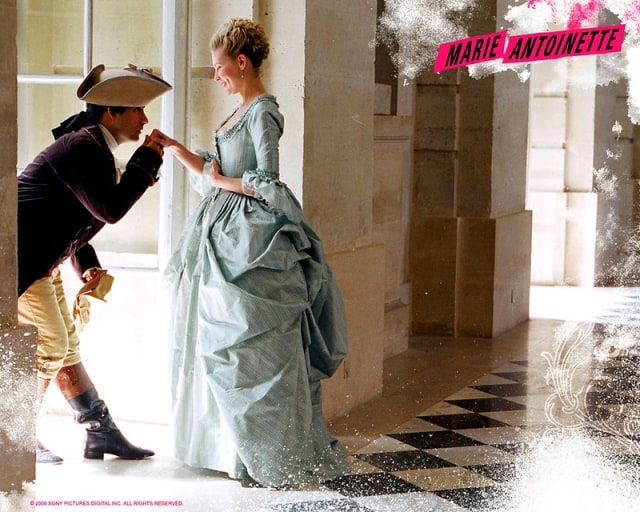
Marie Antoinette, 2006 directed by Sofia Coppola by norika21 – Flickr
The phrase “Let them eat cake” has famously been attributed to Marie Antoinette. She was believed to have answered that to someone explaining to her that the French people had become so poor they could no longer afford bread. In French, the phrase was “Qu’ils mangent de la brioche”, and was used to bring forward the disconnection between Marie-Antoinette’s life (in which everybody, even the poorest, have cake and brioche at home) and the reality of the crisis on the French territory.
However, in reality, this phrase appeared in Jean-Jacques Rousseau’s autobiography The Confessions, attributing it to “a certain princess” without explicitly designating Marie Antoinette. Today, historians believe Rousseau might have invented the whole anecdote from beginning to end.
Her early childhood as a daughter of Emperess paved the way for her luxurious taste
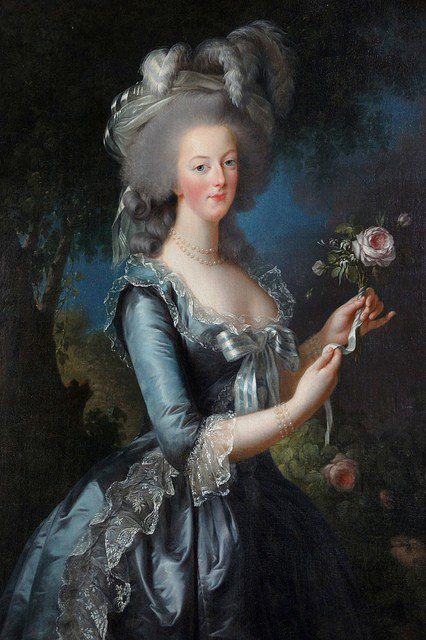
Marie Antoinette by Élisabeth Vigée, Versailles – Flickr
Marie Antoinette was born in 1755 in Vienna, Austria. She was nothing less than the daughter of empress Maria Theresa (who at time ruled the Habsburg Empire) and Francis I, Holy Roman Empire. She came from an Austrian family of emperors. She was born on November 2, a day of mourning the dead, so she always insisted on celebrating her birthday the day before.
When she was 7, she met Mozart, who was two months younger than her and already a prodigy. She never obtained bright academic results, to the extent that at 10 years-old, she was incapable of writing in German, French or Italian, the three languages used at court. Eventually, she decided that what she preferred was music, and learned the harp, the flute and the harpsichord. She was known to have a beautiful voice. Other famous traits included loving luxury dolls, being a tremendously good dancer and being extremely poised.
Her marriage with Louis XVI was tormented, as was her arrival to France

Marie Antoinette by Joseph Ducreux. This miniature was painted when she was 13 years old and was sent to Louis XVI so that he would see what his wife looked like. Source: wikipedia
Marie Antoinette’s mother and Louis XVI’s father decided together, as rulers of France and Austria, to seal the two countries’ alliance by marrying their two children together.
The two has never met, only a medallion of Marie Antoinette was sent to Louis XVI so that he had an idea of what his wife would look like. Marie Antoinette has to officially renounce her rights to her mother’s domain, and she married Louis XVI on the 19 April 1770 in Vienna, without her husband even being present (her brother stood in for her husband during the ceremony). She met her husband upon her arrival in France later that year; but the couple famously failed to consummate their marriage for the following seven years. Marie Antoinette’s brother famously described them in a letter as a “a couple of complete blunderers”.
France’s reaction to the arrival of Marie Antoinette was generally very positive: she was beautiful and the common people appreciated her quite well.
However, Madame du Barry, Louis XV’s mistress, gave her some trouble upon her arrival. After ignoring her for a while, Marie Antoinette decided that she would finally talk to her on new year’s eve 1772. “There are a lot of people at Versailles today”, she simply told her, but this was enough to satisfy Du Barry. Only two days after his father’s death, Louis XVI exiled Madame Du Barry in order to please his wife.
She became increasingly known for her extravagant and worrying spending habits at Versailles
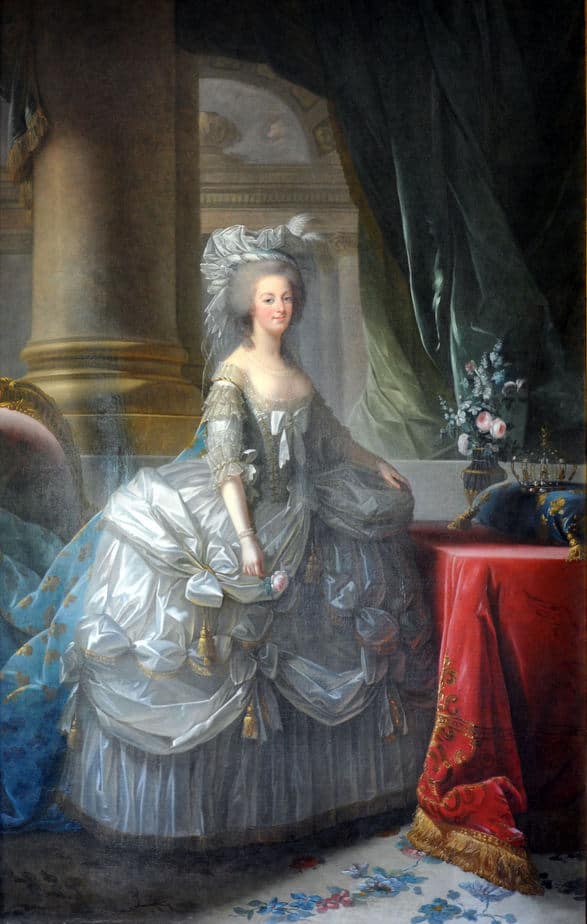
Marie-Antoinette by Elisabeth Vigée-Lebrun, 1783 – WikiCommons
Marie Antoinette is known to be one of the queens of France who spent the most state money during her life, to the extent that she was held accountable for a long time for France’s ruin.
Two days after the death of his father, Louis XVI, newly king of France, offered his wife her own estate, the Petit Trianon, and told her she would spend as much as she liked to renovate it. Some rumors have it that she had covered the walls with gold and diamonds.
At the time, France was going through a severe financial crisis and the people were starving. While the country was suffering unprecedented rough times, Marie Antoinette spent massive amount of crown money on fashion, luxury items and gambling. Her hairstyles famously reached up to a meter high.
Thus, many people started to hold her the sole responsible for France’s economic crisis. Even her mother wrote her to warn her about the civil unrest that was beginning to rise because of her.
Rumors accused her of meddling in French politics to defend Austrian interests, and even of sending money to Austria from the state’s treasury.
In reality, the crisis in France was due to several causes, including the many expensive wars, the overwhelming spendings of the royal family (7% of the total State budget, without taking into account the queen’s secret expenses), and the system of priviledge that supported too many of the upper classes by exempting them of taxes.
However, the people of France perceived the queen to be the sole responsible for the ruin of France, to the extent that in 1787, she was given the nickname of “Madame Déficit”.
Her supposed lesbianism and nepotism both became the source of growing impopularity
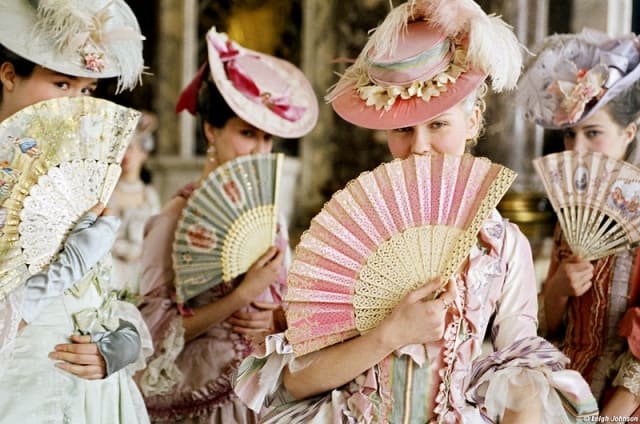
Marie Antoinette, 2006 directed by Sofia Coppola by Angela Thomas – Flickr
Marie Antoinette appointed her favourite, the duchesse de Polignac, to the position of governess. She was rumored to be one of her many lovers. She gave her a thirteen-room apartment in Versailles, and showered the De Polignac family with gifts and money, which enraged many old families at the court.
Rumors of the Queen’s lesbianism were starting to peak after the release of a pamphlet, Le Godmiché Royal (“The Royal Dildo”), that accused her of having sexual relations with a famous English baroness. Later on, at her trial, she was even accused without any evidence of incest with her eldest son.
At first, the queen attempted to counter these gossips by releasing portrays of her no more as a fashion and sensual icon, but as a caring mother, which peaked in the painting by Élisabeth Vigée Le Brun, showing her with her children. This was not enough to counter accusations of lesbianism, known at that time to be “the German vice”.
While the situation grew increasingly complicated in France, she distracted herself with the creation of her “hamlet”, which was a rustic retreat where she would spend hours role playing to be a milkmaid on her own. When the cost of her new extravagance began to spread, a new unrest followed.
Her reputation was lost after the affair of the diamant necklace

This incredible and unique piece, all made of the time’s most expensive diamonds, participated in ruining Marie Antoinette’s reputation. Source: wikipedia
The Affair of the Diamond Necklace was a famous incident that unfurled from 1784 to 1785 at the court. The queen was believed to have been involved into defrauding jewlerers into buying the most expensive diamond necklace at the time. Even though it was later revealed that the queen had had nothing to do in the fraud, the people of France never forgave the queen for her believed involvement, and their rage later on triggered the French Revolution and the king and queen’s deaths.
The attempted flight to Varennes precipitated her family’s death
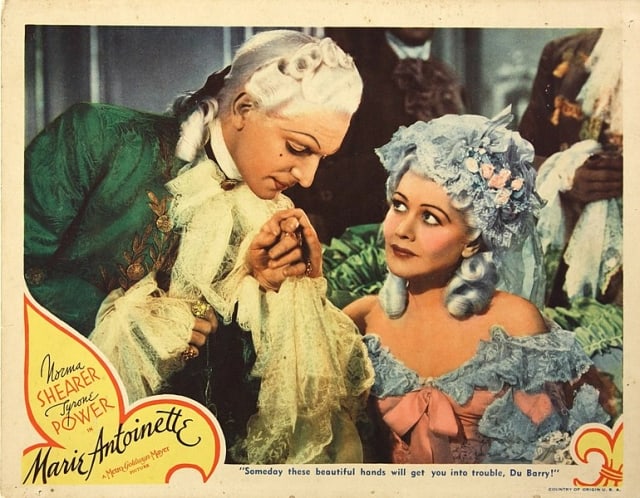
The lobby card for the American historical drama film Marie Antoinette (1938) by Metro-Goldwyn-Mayer (MGM) – WikiCommons
As the situation in France began to boil and revolution prepared, the royal family sensed that they were in high danger. However, due to the king’s indecisiveness, the royal family did not manage to flee in time. Marie Antoinette always refused to escape alone without her husband.
When Louis XVI understood their only chance of survival was to escape, it was too late: the royal flight to Varennes took place during the night of the 21st June 1791, and was unsuccessful largely due to the king’s indecision. They were attempting to escape the mob and meet loyal troops managed by royalists officers at the frontier. However the royal family, due to a succession of blunders, only managed to reach the small town of Varennes, where they were recognized and arrested.
This incident is considered by historians as the turning point which led to the people of France’s rage against the royal couple’s treason, which led to their bloody execution two years later.
The event also triggered a disgust with the monarchy and fueled republicanism against many revolutionaries. After the Varennes incident, the king and queen could no longer get the benefit of the doubt: their death became imminent.
She was executed shortly after her husband and kept her composure until the end
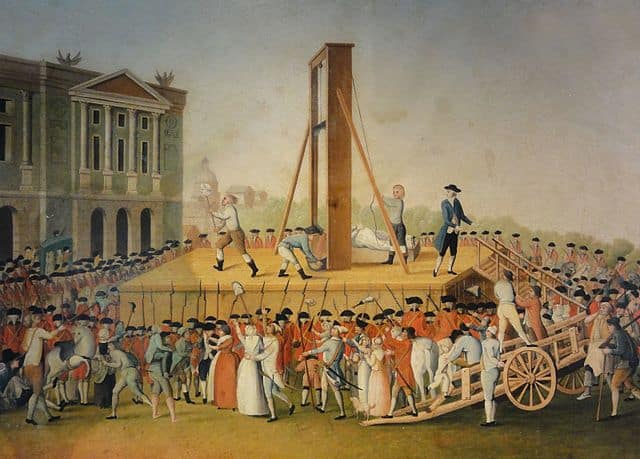
Marie Antoinette’s execution in 1793 at the Place de la Révolution – WikiCommons
Louis XVI’s spectacular execution took place on the actual Place de la Concorde (formerly known as Place de la Révolution).
The execution was decided by the National Convention (the first government of the Revolution) after a vote during which no deputy voted “not guilty”. Before he was executed, he tried to deliver a speech but the crowd’s noise made it impossible to be heard. On the morning of the execution, a faithful royalist had planned an escape for the king alongside 300 other royalists, but they had been denounced and thus the plan failed.
Shortly after, Marie Antoinette was transferred from the Temple to the Conciergerie, in a cell with no intimacy. Yet another plot to help her escape failed (known as the Complot de l’oeillet).
The morning of her execution, she was forced to undress in front of her guards. She wore a white dress. She was brought to the Place de la Concorde under the insults of the cheering crowd. She was executed by the guillotine on October 16th 1793. Before dying, she stepped on the executioner’s shoes, to which she promptly said “Pardon me, sir, I did not do it on purpose”. These are known to be her last words.
–
There you have it, all about the life of Marie Antoinette! If you want to learn more about the French revolution and the storming of the Bastille, you can check out our Top 10 Interesting Facts About Bastille Day.
And if you are curious about French history in general, then check out our Top 10 historical events that happened in Paris. You will discover how much French history has come to shape Paris’ contemporary monuments and shape.
Planning a trip to Paris ? Get ready !
These are Amazon’s best-selling travel products that you may need for coming to Paris.
Bookstore
- The best travel book : Rick Steves – Paris 2023 – Learn more here
- Fodor’s Paris 2024 – Learn more here
Travel Gear
- Venture Pal Lightweight Backpack – Learn more here
- Samsonite Winfield 2 28″ Luggage – Learn more here
- Swig Savvy’s Stainless Steel Insulated Water Bottle – Learn more here
Check Amazon’s best-seller list for the most popular travel accessories. We sometimes read this list just to find out what new travel products people are buying.



